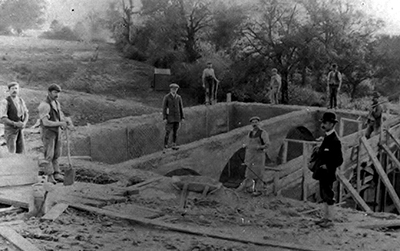The small country town of Beaminster lies in a valley five miles North of Bridport in the attractive West Dorset Countryside. A market town it provides a good range of services and light industries while retaining considerable charm and historic interest. There is a thriving hotel and a couple of public houses
Beaminster is the product of the Anglo- Saxon age, the date of origin of the town is unknown. The place name and historic evidence indicates that it was probably the site of a primary Saxon minster church and was at the centre of a large episcopal estate. These are likely to have acted as a focus for a settlement, but evidence of its formation is lacking.
The Romans passed Beaminster, building their settlement in Durnovaria (Dorchester) and built the road that ran westward from Dorchester to Exeter.
Beaminster has an abundance of water making it an ideal place for a settlement. Two comparatively small rivers rise in the parish of Beaminster and the surrounding area from which both make their way to the sea.
The river Axe rises in Chedington copse, a short distance north of the town and meanders its way some forty miles through Somerset, and flows out to sea at Axmouth near Seaton in Devon.
The smaller river Brit is quite different, rising a mile above Beaminster at Shatcombe springs on the Western slopes of Toller Down. Spending its short life between Beaminster and Bridport eventually entering the sea at Bridport Harbour or West Bay as it is known to-day.
The mains water arrived in Beaminster circa 1908. Towards the end of the 19th century a concrete constructed reservoir was built on land at Shatcombe springs. It is believed the construction company which laid the mains and built the reservoir were McDonalds from Scotland. Local labour would have been used, although larger Victorian companies used “navvies” who often travelled around the country with the company. The reservoir supplied the town with a population of circa 1,800 people via a 4” cast iron main. The cast iron pipes were reduced to 3” distributing water to the homes in the narrow streets of the town.
Most homes would have had a connection to the mains water supply, this probably consisted of a single bib tap over a Belfast sink and a out-side WC.
When one of the first council estates was completed at Gerrard’s Green off of North St, Beaminster circa 1954, more modern conveniences’ could be found, this would be a bath, basin, indoor WC, kitchen sink and some form of coal fired back boiler, for hot water.
As the population grew (3,010 in 2010) a 6” cast iron main was laid from the reservoir to Beaminster reinforcing the existing 4” main. As well as the new main to the town, a pipe was laid to a new reservoir which was built circa 1967 at North Warren Hill south of Beaminster, this was to supply Netherbury, Waytown, Oxbridge, Melplash and West Milton. This was the first time all these villages received mains water.
In the very early days when the reservoir and mains were commissioned the water supply would have been managed by Beaminster RDC, but the daily operation of the treatment and distribution network was operated by JWR Newman & Co who were a local company of plumbers and electricians, unfortunately they have ceased trading. This company also operated the gas works which was sited at the top of St Mary’s Well Street and eventually closed in 1982.
Subsequent changes with local authorities meant that the Beaminster water supply was managed by the West Dorset Water Board, then Dorset Water Board and now its present supplier is Wessex Water.
Photographs show the reservoir being constructed at Shatcombe springs and the mains being laid in Fleet Street Beaminster. This water main is still in operation to-day.
Alas after some 118 years of service the reservoir at Shatcombe springs known as Langdon Reservoir has now been abandoned. The water supply to Beaminster will now come from Toller Down Reservoir which has a larger and more secure capacity.
(Paul Coggins has worked for Wessex Water for 34 years).








